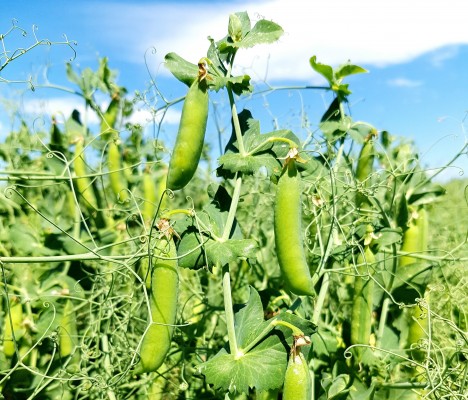The recent Indian pea tariff is a source of deep consternation for some, and yet it is not surprising for others. Folks with the latter view point to the recent softening of demand for peas from India. For example, in 2015, 67.4% of India’s pea imports were of Canadian origin. In 2016, this number had dropped to 52.4%. Many point to recent favourable growing conditions in India that created larger domestic supply as the main cause for the tariff that has left many world sellers, especially those in Canada, shell-shocked.
Whatever sentiment or view you may hold, the tariff is big and the importance of India as a buyer of Canadian peas is even bigger. Many have speculated on the duration of this tariff – that is best left to commodity analysts and public opinion-makers. The immediate impact, however, is that it will influence 2018 planting intentions.
How will growers react? Despite signs of new interest and demand in plant protein that is being facilitated by new investment in domestic value-added processing, it is apparent that any additional demand this will create will not offset the immediate loss from India. 2016 Indian imports of Canadian peas were 1,605,167 MT. Estimates have put the annual demand for peas by the planned processing facilities in Portage la Prairie, MB and Vanscoy, SK somewhere between 100,000-150,000 MT per facility. Assuming demand signals from other import countries remain constant from now until spring, it looks like growers will commit less of their land to peas. Some have predicted a 20-25% decrease in pea acres in 2018.
For those who do decide to grow peas, doing more on less land will be a key challenge and one way to do this will be to boost yields. The current outlook makes it a good time to start re-evaluating how to do this. The obvious answer from the perspective of a seed company is of course to think variety!
A look at the 2018 Provincial Seed Guides from all provinces show there is much to be gained by making the right variety decision. For example, in the 2018 Manitoba Seed Guide, the latest CANTERRA SEEDS yellow pea release, AAC Carver, out-yielded the most popular yellow pea currently in the market, CDC Meadow, by 10%. The exact same yield advantage was also seen in Alberta. AAC Carver performed even better in SK, reaching 112% of CDC Meadow across all zones in the 2018 Saskatchewan Seed Guide. It should go without saying that variety decisions are a key contributor to maximizing the yield potential of a crop and how taking the time to study your options and choosing newer and better varieties is worth the investment.


